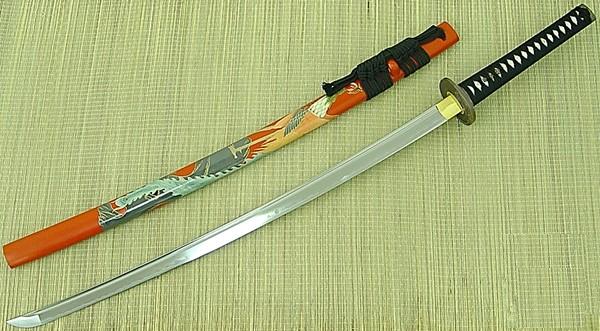Have you always wondered how katana swords are made and the amount of time taken to capture the intricate details of this sword?
Distinguishing the Real from the Fake
If you have read about samurai warriors, then you might know that their swords were a crucial part of their lives. They took pains to make these swords to slay their enemies.
- A real samurai katana sword is likely to be priced at a higher range.
- A genuine katana blade will have two different colors. The back blade is made of soft metal and the sharp end is made from hard metal lighter in color
- An authentic katana sword is folded many times
- A fake katana sword is most likely to break, while slicing through things
Process of Making Traditional Samurai Swords
The process of designing the katana sword can be broken down to 4 different processes namely:
- Smelting
- Folding
- Forging
- Coating , Curving and Polishing
Smelting
Katana sword is made up of pure steel known as tamahagane. Sword manufacturers make use of tatara a rectangular furnace made of clay to melt this tamahagane. Even when the tamahagane is smelted at high temperatures, the sword manufacturer needs to ensure that there is sufficient amount of carbon embedded into the steel. A traditional katana makes use of two types of carbon namely high carbon that contributes for its razor sharp edge and the low carbon for shock absorption.
Folding
In this step the good tamahagane is folded numerous times to remove the impurities. This also contributes to the strength of the katana swords.
Forging
Next step is the forging process where a single layer of steel is heated and increased in its length. This is then folded into half until it reaches the desired length.
Coating, Curving, and Polishing
In the last phase, the blade is coated, curved and polished into the final sword. The katana blade is coated with charcoal and clay onto the back and upper edges. The sword smith then plunges the katana into the fire and later on draws it out only to push it into cool water known as quenching. The sword is polished and sharpened on different grinding stones. Lastly it is decorated with ornaments and accessories making it unique.
Hardening of Modern Samurai Swords
Many people might opt for differential hardening, while there are others who may prefer the laminated version when they buy samurai sword katana blades. So what is the difference?
Differential hardening is the process of coating the katana blade with clay, and heating it at a pre defined temperature. A thick layer of clay is applied onto the spine and a thin layer onto the edge of the sword. The blade is later pulled out from the furnace to quench in cool water. The spine with thick layer coating remains soft and flexible whereas the thin layer edge contributes to sharp edge.
Lamination involves taking different steel billets and combining them to create a sharper and flexible blade.
Conclusion
Ensure that your options are researched carefully when it comes to purchasing katana blades. You may need to clean and maintain their beauties by regularly polishing and oiling them.

